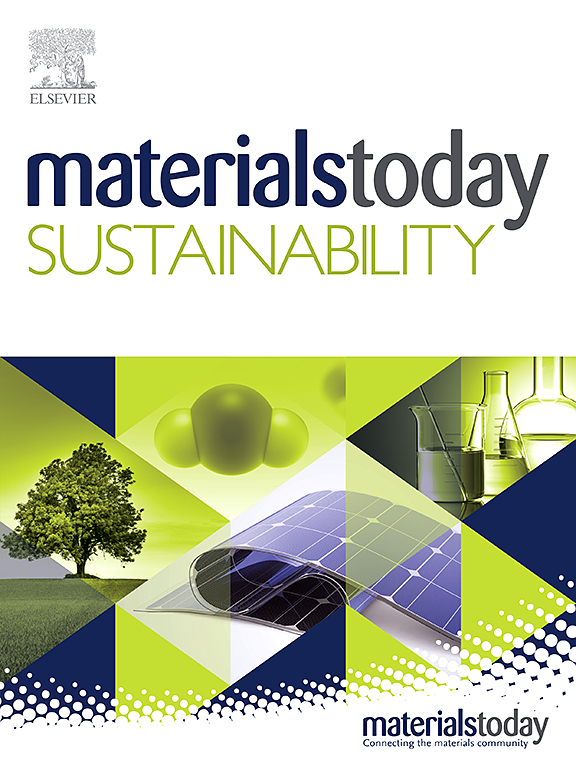用于催化CO2还原和水分解反应的二维过渡金属基mof:第一线原理计算的最新见解
IF 7.9
3区 材料科学
Q1 GREEN & SUSTAINABLE SCIENCE & TECHNOLOGY
引用次数: 0
摘要
有效的催化二氧化碳还原和水分解对于减少温室气体排放和推进可持续能源解决方案至关重要。然而,由于对复杂的化学机理和可行的反应途径了解不足,设计新型高效催化剂面临着挑战。在一些情况下,仅用实验方法很难构建合理的催化途径。因此,了解原子层面的详细机制需要深入了解所使用的催化材料的基本电子和结构性质以及热力学性质。从量子力学到分子动力学尺度,理论计算可以提供重要而有用的信息。最近的计算研究集中在设计具有大表面积、优异的电荷转移能力、高稳定性、可调孔隙率和可调电子结构的高效催化剂上。过渡金属基二维(2D)有机骨架(mof)具有这些特性,并已被证明可以作为CO2还原反应(CO2RR)和水裂解过程的有效催化剂。理论计算在促进我们对mof吸附机理的理解方面起着重要的作用。本文综述了利用过渡金属基二维MOF材料作为新型光催化剂的计算进展,重点介绍了CO2还原和水裂解反应。模拟方法,可能的结构模型,电子性质,分子热力学和反应机理进行了深入的讨论。最后,强调了挑战和可能性。本文章由计算机程序翻译,如有差异,请以英文原文为准。
Two-dimensional transition metal-based MOFs for catalytic CO2 reduction and water splitting reactions: Recent insights from first principles calculations
Efficient catalytic CO2 reduction and water splitting are essential for mitigating greenhouse gas emissions and advancing sustainable energy solutions. However, the design of novel and efficient catalysts faces challenges most of the time due to the inadequate understanding of complex chemical mechanisms and feasible reaction pathways. In several cases, it is hard to construct reasonable catalytic pathways using experimental methods only. Therefore, understanding the detailed mechanisms at the atomistic level requires insights into the fundamental electronic and structural properties, as well as the thermodynamic nature of the catalytic materials used. From quantum mechanical to molecular dynamic scales, theoretical calculations can provide significant and useful information. Recent computational investigations have focused on designing highly efficient catalysts with large surface areas, excellent charge transfer capabilities, high stability, tunable porosity, and a tunable electronic structure. Transition metal-based two-dimensional (2D) organic frameworks (MOFs) can possess these properties and have demonstrated the ability to be used as efficient catalysts for CO2 reduction reaction (CO2RR) and water splitting processes. Theoretical calculations play a significant role in promoting our understanding of adsorption mechanisms over MOFs. This review summarizes computational advancements in using transition metal-based 2D MOF materials as novel photocatalysts, focusing on CO2 reduction and water splitting reactions. The simulation methods, possible structural models, electronic properties, molecular thermodynamics, and reaction mechanisms have been thoroughly discussed. Finally, the challenges and possibilities are highlighted.
求助全文
通过发布文献求助,成功后即可免费获取论文全文。
去求助
来源期刊

Materials Today Sustainability
Multiple-
CiteScore
5.80
自引率
6.40%
发文量
174
审稿时长
32 days
期刊介绍:
Materials Today Sustainability is a multi-disciplinary journal covering all aspects of sustainability through materials science.
With a rapidly increasing population with growing demands, materials science has emerged as a critical discipline toward protecting of the environment and ensuring the long term survival of future generations.
 求助内容:
求助内容: 应助结果提醒方式:
应助结果提醒方式:


